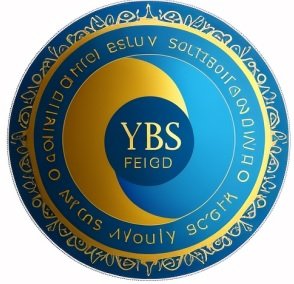Podcast: Play in new window | Download
In a recent episode of The Insurance Pro Blog Podcast, we explored an often-overlooked investment vehicle that could potentially revolutionize retirement income strategies: closed-end funds. My special guest, Steve Selengut, shared his expertise on how these funds can be used to create additional retirement income streams. Let’s dive into the key takeaways from this informative discussion.
Understanding Closed-End Funds
Closed-end funds have been around since the early 1800s, predating both mutual funds and ETFs. Despite their long history, they remain less well-known than their investment counterparts.
What Are Closed-End Funds?
Closed-end funds are investment vehicles that:
Are structured as trusts rather than unit ownership like mutual funds
Trade on stock exchanges, similar to stocks
Have prices determined by supply and demand, not net asset value (NAV)
Are required by law to pay out 95% of their earnings to shareholders
This last point is particularly significant for income-focused investors. The high payout requirement means closed-end funds are designed to produce steady income rather than substantial capital appreciation.
How Closed-End Funds Differ from Mutual Funds and ETFs
Unlike mutual funds and ETFs, closed-end funds:
Don’t issue or redeem shares daily to match NAV
Can trade at prices above or below their NAV
Often use leverage to enhance returns
The Income Potential of Closed-End Funds
One of the most attractive features of closed-end funds for retirees is their potential for high yields. According to Selengut, many closed-end funds currently offer yields of around 10%, significantly higher than traditional fixed-income investments.
Comparing Yields: Closed-End Funds vs. Traditional Investments
To put this in perspective, consider a million-dollar portfolio:
Traditional 4% withdrawal rule: $40,000 annual income
10% yield from closed-end funds: $100,000 annual income
This substantial difference in income potential makes closed-end funds an intriguing option for those seeking to maximize their retirement income. And you can produce enough income from distributions (monthly or quarterly) to avoid selling shares to meet your income goals.
Leveraging in Closed-End Funds: Understanding the Risks and Benefits
One aspect of closed-end funds that often raises concerns is their use of leverage. However, Selengut argues that this leverage is not inherently riskier than other forms of investment borrowing.
How Leverage Works in Closed-End Funds
Closed-end fund managers borrow money at lower interest rates to invest in higher-yielding securities. This strategy aims to enhance returns for investors. Key points about leverage in closed-end funds include:
It’s typically limited to 50% of net asset value
Many funds use around 30% leverage
Borrowing is usually short-term and at fixed rates
Some funds use preferred stock for long-term borrowing
Comparing Leverage to Other Investment Strategies
Selengut points out that leverage is standard in many investment areas:
Real estate developers use leverage to finance projects
Corporations issue bonds to fund operations
Even individual investors might use home equity loans to invest
The key is that fund managers only use leverage when they believe the potential returns outweigh the costs.
Income-Focused Investment Strategy for Retirement
A central theme of the discussion was the importance of focusing on income rather than just accumulation when planning for retirement. This approach can provide more predictable and sustainable retirement income.
The Two Streams of Income from Closed-End Funds
Selengut highlighted two primary ways closed-end funds can generate income:
Regular distributions: Monthly or quarterly payouts from the fund’s earnings
Profit-taking: Selling appreciated fund shares to realize capital gains
The Profit-Taking Strategy
Selengut advocates for active management of closed-end fund portfolios, including regular profit-taking. This strategy involves:
Setting target profit levels for each fund
Selling when those targets are reached
Reinvesting profits into other funds, potentially at better yields
This approach can potentially increase the overall income-producing capacity of the portfolio over time.
Market Volatility: Friend or Foe?
Interestingly, Selengut argues that market volatility can actually benefit closed-end fund investors. This perspective challenges the conventional wisdom that volatility is always negative for retirees.
How Volatility Can Benefit Income Investors
During market downturns:
Fund prices may decrease, offering buying opportunities at higher yields
Investors can reinvest distributions at potentially better rates
The income stream from the funds typically remains stable, even if prices fluctuate
This stability of income, coupled with opportunities to buy at better yields, can make closed-end funds an attractive option for retirement income.
Practical Considerations for Investing in Closed-End Funds
While closed-end funds have significant potential benefits, several practical aspects must be considered when incorporating them into a retirement strategy.
Diversification and Risk Management
Selengut emphasizes the importance of diversification within closed-end fund investing:
His portfolios typically include hundreds of different funds
This broad diversification helps mitigate the risk of any single fund underperforming
Avoiding Automatic Reinvestment
Contrary to common practice with other investments, Selengut advises against automatically reinvesting distributions from closed-end funds. His reasons include:
Maintaining better control over diversification
Ability to seek new opportunities with distributions
Avoiding potential yield reduction through reinvestment at higher prices
The Importance of Active Management
Successfully investing in closed-end funds requires more active management than a typical buy-and-hold strategy. This includes:
Regular monitoring of fund performance
Taking profits when target levels are reached
Reinvesting in funds offering better yields or value
Challenges and Considerations
While closed-end funds offer significant potential for retirement income, it’s important to consider some challenges and potential drawbacks.
Complexity and Learning Curve
Investing in closed-end funds can be more complex than traditional mutual funds or ETFs. It requires:
Understanding how closed-end funds operate
Regular monitoring and management of the portfolio
A willingness to actively buy and sell based on fund performance and market conditions
Limited Popularity and Availability
Despite their long history, closed-end funds are less popular than other investment vehicles. This can result in:
Less readily available information and research
Potential liquidity issues with some smaller funds
Limited options in some 401(k) or other employer-sponsored retirement plans
The Need for Professional Guidance
Given the complexity of closed-end fund investing, many investors may benefit from professional guidance. This could involve:
Working with a financial advisor experienced in closed-end funds
Utilizing resources like Selengut’s coaching services or investment newsletters
Regular education and staying informed about market conditions and fund performance
Conclusion: A Powerful Tool for Retirement Income
Closed-end funds represent a potentially powerful tool for generating retirement income. Their high yield potential, coupled with strategies for active management and profit-taking, can offer retirees a way to potentially increase their income beyond what traditional investment approaches might suggest.
However, it’s crucial to approach closed-end fund investing clearly and understand the potential benefits and complexities involved. As with any investment strategy, it’s wise to thoroughly research and possibly seek professional advice before making significant changes to your retirement portfolio.
By focusing on income generation and utilizing strategies like those discussed by Steve Selengut, retirees may be able to create more robust and sustainable income streams to support their retirement lifestyle. While closed-end funds may not be suitable for everyone, they certainly deserve consideration as part of a comprehensive retirement income strategy.
Get Your FREE Copy of Retirement Money Secrets
We’re also offering our listeners the opportunity to get a FREE copy of Steve’s latest book, “Retirement Money Secrets: A Financial Insider’s Guide to Income Independence.”
To get your FREE copy, just click on this link and fill in your information. We’ll ship the book to you as quickly as possible.











